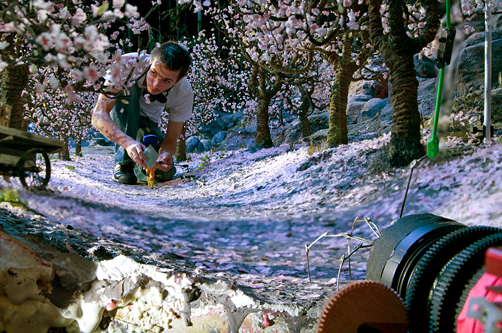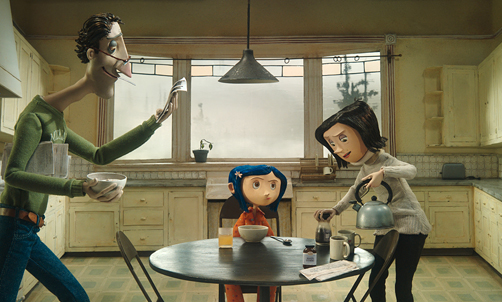One of my favourite reviewers has written an interesting article comparing the recent trend of shoehorning 3D into films with the artificial colorisation of old black & white films. I wonder what proportion of audiences know that Alice in Wonderland was not shot in 3D and Burton’s involvement was negligible, or that a 3D version of Clash of the Titans wasn’t even conceived until Avatar’s runaway box-office success. My discussion of both Avatar and Coraline has made it clear that I like 3D, but I enjoy it as a creative tool that increases immersion. The driving force should not be the cinema surcharge (notice how they retain the glasses so they can charge you again and again, irrespective of how many you 3D films you see) and increased revenue for distributors. One has to question supporting greed rather than creativity, not least with the freely available 3D YouTube content I mentioned recently.
Alice is about to hit cinemas and, having seen the tacked-on effects in the 3D trailer, I will certainly be watching this one in 2D. In a stand that makes it clear we won’t pay more for an arbitrary extra dimension, I wonder if you will do the same?
Links from the last month:
- flavors.me offers an easy-to-create, elegantly attractive page to tie together your online presence, incorporating sites like LinkedIn, Facebook, Last.fm and Twitter along with blogs and RSS feeds. I’ve used it for a priyan.meewella.com subdomain, at least until I get round to coding something myself. Naturally consider carefully whether you want to make your facebook status/photos easily available to potential employers, etc.
- Inbox2 has released a desktop application alongside its beta web version, allowing anyone to try out its approach to merging all your email and social networking into a single inbox. I’m trying it out at the moment and while I don’t think it will replace the fuller feature-set enjoyed by each of the sites it incorporates, it’s not a bad way to check your digital life at a glance first thing in the morning. It also appreciates the distraction caused by social networking sites, so allows you to stop displaying some sources while working.
- Wired’s list of must-read comics.
- Cooking in the dishwasher (Anna and I got harassed by a guest for using our dishwasher primarily as a drying rack after handwashing dishes; imagine if we got into this!)


